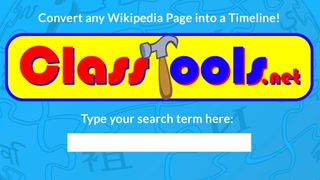ClassTools is an easy-to-use website filled with resources for use by educators that allows them to get creative with digital freedom.
While the website may look like something from the Nineties, it does offer a lot of useful tools, and perhaps by keeping it simple in design, it also stays very easy to use.
The idea is to offer templates that can be completed quickly and simply in order to create useful teaching tools. That can mean building a game, quiz, activity, and more, all with the bespoke information needed to teach a specific subject or topic.
So could ClassTools be a useful online resource for you? This guide explains all you need to know.
What is ClassTools?
ClassTools is a website that compiles a selection of templates used to build teaching resources with your own content and ideas, going into frameworks that make these easy to use.

Specifically, this focuses on making quizzes, activities, games, and diagrams. Whichever option you go for it's possible to type in any information you need, which should make this a viable option to teach almost anything.
These can be used in class or sent to students to work with at home in their own time. Since this is so easy to share, the content can be accessed across a range of devices as long as you have an internet connection. Teachers can share directly by publishing to the site or using a code to embed these into their own websites.
How does ClassTools work?
ClassTools lays out everything on the homepage and lets you scroll through to pick the game you want to build. Or you can use the dropdown menu to the left where all the tools are listed -- ideal if you know what you need and want to skip right to that.

ClassTools lets you get right to work with everything freely available and no need to sign up for most tools, although there are some premium tools, labelled as such, which you'll need to sign-up for.
Pick a game, Crossword Generator for example, and you can begin creating your own using the template right away. Instructions on what you need to input are available, making this easy to use even for those less confident with technology or for younger students.
Once the game is created it can then be published on the site for public use, making sharing very easy. Or you can use the output code to embed that wherever you like.
The Most Popular section lists six of the best picks used by site visitors -- a good place to start if you're not sure which game or quiz is the right option for you.
What are the best ClassTools features?
ClassTools lays out its selection of games, quizzes, and more all available on one page so navigation is very straightforward and makes browsing to discover new ideas an option too.

Some of the best games and quiz options include:
- Random Name Picker: Letting you select names, perhaps for questions in class, with ease.
- Fakebook Generator: To create a Facebook-style page filled with offline content to explore a historical character as if really online now, for example.
- The Vortex: A sorting game that can be used in a wide variety of subjects and topics.
- Arcade Game Generator: Create classic games with learning baked into the fun.
- Fling the Teacher!: Turn factual tests into a fun game with up to 15 questions.
- QR Treasure Hunt Generator: Print and hide QR codes to get students hunting using their devices to find questions, and answer correctly to gain points.
How much does ClassTools cost?
ClassTools offers a wide selection of tools you can use without the need to sign up or pay anything, although there are some ads on the website.
You can also pay for a premium membership -- from $9.99 for six months -- to get ad-free access, a personal area to organize resources, full history access, secure resources not affected by site clearance, edit existing games, personal branding, clear leaderboard option, unlock all templates, and get premium support.
ClassTools best tips and tricks
Get students involved
Let students build quizzes as well as partake as a way to learn digital interaction and creative ways to share information.
Exit with a QR quiz
After teaching a new subject to the class, end with a QR quiz that tests and helps learning on the new area.
Use Fakebook broadly
Build fake profiles for historical characters, for scientific figures, for pioneers of tech, and beyond. But also let students build profiles to bring characters to class.

